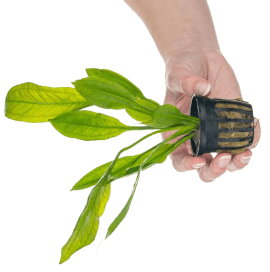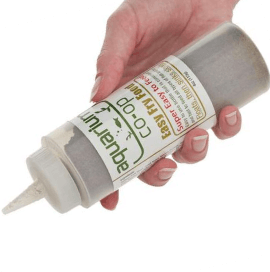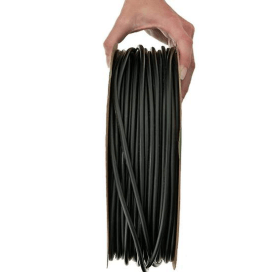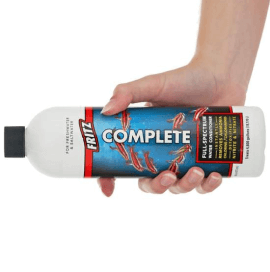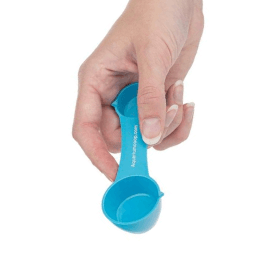How to Set Up a Beginner Planted Aquarium
If you’re looking to level up in your aquarium keeping skills, consider adding live aquatic plants. Not only do they add a natural beauty to your tank, but they also help consume toxic waste chemicals and purify the water for your fish. Follow along as we step you through the process of setting up your first low tech planted aquarium.
Before You Start: Gather the Planted Tank Supplies
Let’s first form a shopping list of necessary materials. If you are new to planted aquariums or are working on a limited budget, there’s no need to get a rimless, low-iron glass aquarium that costs a fortune. A regular glass tank from your local pet store works just fine, and the rim actually serves a purpose to help buffer against any unevenness between the aquarium and the stand.
The fish tank should be placed on a hard and level surface, such as an aquarium stand, kitchen counter, or solid piece of furniture. Make sure that the surface (and the floor beneath it) can support the weight of the entire aquarium setup, which may weigh nearly 10 pounds per gallon once you add the water, substrate, equipment, and decorations.
While an aquarium lid may seem like an unnecessary expense, we highly recommend getting one because it minimizes heat loss and the amount of electricity the heater uses. A lid also decreases evaporation, which can cool the tank and cause swinging water parameters that stress your fish. Plus, a fish tank cover is a simple way to prevent fish, shrimp, and snails from accidentally jumping or climbing out of the aquarium.

An aquarium lid stops fish from jumping out and other household pets from getting in.
An aquarium background is optional but nice to have since it hides the power cables and airline tubing from view. You can buy a background from the local pet store, spray the back panel of the tank with Plasti Dip rubber coating, or even tape posterboard to the aquarium. We personally like black backgrounds since the color seems to make plants stand out more and hides algae better.
A heater and thermometer are usually necessary if you plan to keep tropical fish. Read our full article on how to choose an appropriately sized heater for your setup.
For lighting, there are many, many options to choose from, so in general, we recommend that beginners go with an LED light for planted aquariums because they are designed to provide the optimal spectrums and PAR (Photosynthetically Active Radiation) levels for growing aquarium plants. For more information, read our article on how to pick the best planted aquarium light for your specific needs. A light timer is also extremely helpful for making sure your plants get a consistent amount of light every day and preventing algae growth.
Substrate is another hotly contested topic in the planted aquarium world. Dirt and enriched soils are often touted as the best options because of their high amounts of nutrients, but these excess nutrients can leak into the water and cause water quality issues or algae blooms for inexperienced hobbyists. Therefore, we recommend that beginners start with inert substrates that contain no nutrients, such as aquarium gravel or coarse sand. For more information, find out how to pick the best substrate for your planted tank.

Tweezers are useful for planting aquarium plants or adding root tabs into the substrate.
You can design your aquarium using only live plants, but many people like to add hardscape, such as aquascaping rocks and driftwood that are safe for fish tanks. You can look online for inspiration or pick whatever looks good to you. Other useful planted tank supplies include:
- Dechlorinator to remove chlorine and other toxins from the water
- Easy Green all-in-one fertilizer to feed your plants
- Water test strips to measure how much fertilizer you need to add
- Algae scrubber to clean the aquarium walls
- Planting tweezers to insert new plants or root tabs into the substrate
- Pruning scissors to remove dead leaves or propagate plants
- Aquarium siphon to change water and vacuum the substrate if needed
Finally, let’s talk about buying the live aquarium plants. The reason why we saved them for the very end of the checklist is because you should wait until you have almost everything set up before shopping for them. For example, it would be unfortunate if you got your new plants and then realized that you don’t have enough substrate to cover 2-3 inches of the tank bottom. Here are some helpful tips when making your plant selection:
- Go with beginner plants if you’re new to planted tanks. They tend to be hardier and more forgiving when we make mistakes.
- Buy a wide variety of plants to try out because some species may thrive in your water conditions and others may not.
- Save up and buy lots of plants upfront if possible. Having a large density of plant mass helps to use up the available nutrients in the tank and decrease algae growth.
How to Set Up a Fish Tank with Live Plants
Now that you have all the supplies ready, here is a step-by-step guide to assembling your aquarium:
- Pick a suitable location. Ideally, the fish tank should be near an electrical outlet, as well as a source of water for easy water changes. To minimize algae growth and temperature swings, don’t place the tank in direct sunlight or near an air conditioning vent. Also, avoid high traffic areas where the tank may get bumped into by adults or explored by curious pets and young kids.

Choose a location for your aquarium in a low traffic area out of direct sunlight that has nearby access to an electrical outlet and running water.
- Prepare the aquarium stand or counter space by installing the stand and cleaning the surface.
- Rinse the aquarium and accessories. First, wash the tank, substrate, and hardscape with water (no soap) to reduce cloudy water. Next, install the aquarium background if desired. Some people choose to quarantine their live plants at this point to remove duckweed, pest snails, and other hitchhikers.
- Place the tank on the stand and add the substrate. Planted tanks usually require at least 2-3 inches (5-7.5 cm) of substrate. Also, insert root tab fertilizers into the ground if you are using inert substrate and have cryptocoryne plants, sword plants, or other species that feed heavily from their roots. (Read this article on how to use root tabs and which plants require them.)
- Place the equipment and hardscape in the aquarium. The heater and filter are not turned on at this step but are merely positioned in the tank so that you can use the plants and decorations to hide them. The rocks and driftwood form the “skeleton” or framework of your planted tank design, so take your time and rearrange the pieces as much as needed in this step.

Before you add any water, spend time moving around the hardscape and plotting out where the plants will go.
- Fill the tank partially with dechlorinated water. By adding approximately 6 inches (15 cm) of water, the lowered water level helps to support the plant leaves while you are planting them so that they do not bend too much and break. When filling the aquarium, pour the water through a colander or onto a plastic bag or bowl to avoid disturbing your aquascape design.
- Plant the plants. We have a whole blog article that breaks down the different techniques used for each type of plant. Place the taller plants in the background so they won’t hide the shorter plants in the front. Also, consider where the aquarium lighting will be so that you put the low light plants in the shadows or the edges of the tank and the higher light plants right underneath the light. Finally, don’t move the plants once you have planted them because each time you relocate them, the plant requires an adjustment period before it can get well-rooted and start growing quickly again.
- Fill the rest of the tank, and add the lid and light. Turn on the equipment and make sure everything is working properly. If you are using a heater, you may need to wait 30 minutes for it to acclimate to the water temperature before turning it on.
- Start with low amounts of fertilizer and lighting at first to avoid algae growth. In the beginning, the plants are still getting used to their new surroundings and won’t be growing as much. Therefore, program the timer for only 5-6 hours per day at first. Slowly increase the amount of lighting and Easy Green fertilizer each week as you start to see plant growth.

Don’t feel like you have to copy the professional aquascapes you see online. Use your creativity and design your planted aquarium in a way that is most pleasing to you.
If some of your plants' leaves start melting, do not throw away the plants. Most likely they are growing new, smaller leaves that will be more accustomed to living underwater in your local tap water, as described in this article. However, if your plants are still not doing well three to four weeks after planting them, read our article on plant nutrient deficiencies to make sure they’re getting all the essential building blocks they need.
